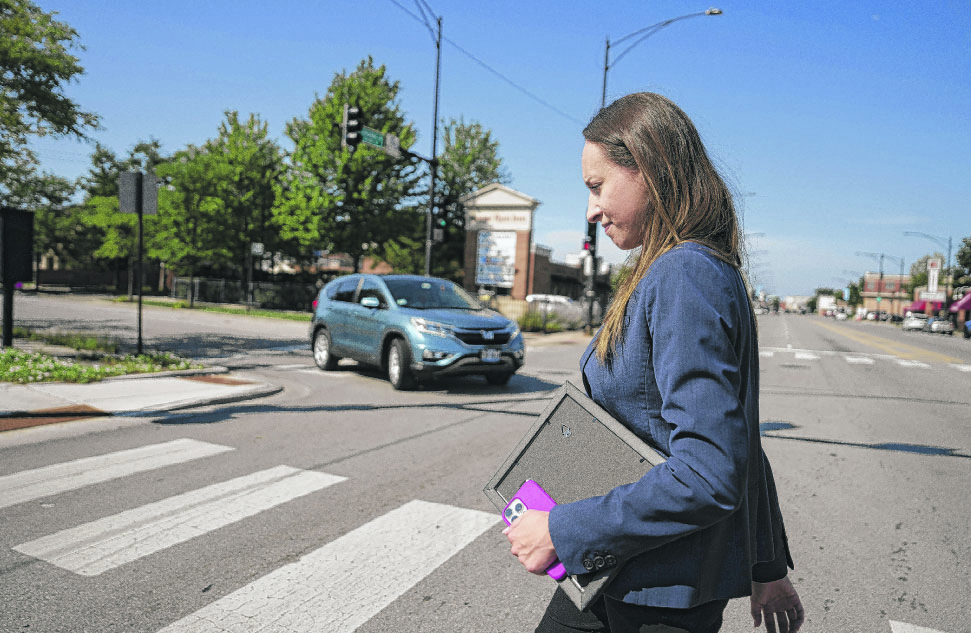
PAT NABONG/SUN-TIMES
Almost a decade after the city set out to eliminate all traffic deaths by 2026, nearly as many people are dying on Chicago streets as they were when the ambitious goal was announced.
The number of yearly injuries and crashes on the roads has actually increased in that time, despite the city’s efforts to upgrade dangerous intersections and install miles of bike lanes, among other safety measures.
In 2024, Chicago logged 109 deaths on the road — 38 pedestrians, two cyclists and 69 people in vehicles. Although that represents a drop from a spike in deaths during the pandemic, that’s only 18 fewer than in 2017, when the city’s Vision Zero plan was published.
And more than 23,000 people were injured in crashes in 2023, the most recent year for which collision data is available — an 8% increase or nearly 2,000 more injuries than in 2017.
“This is incredibly frustrating given the emphasis the city has placed on safety,” says Joseph Schwieterman, director of DePaul University’s Chaddick Institute for Metropolitan Development. “This trend has to be slowed just because it’s unacceptable for any modern city.”
Why isn’t the city making meaningful progress at reducing traffic deaths? Experts and advocates say the city has the right idea in its Vision Zero plan, which was part of an international movement in the 2010s to address persistent traffic deaths by addressing road design, speeding, enforcement and public education.
Similar plans have worked in other cities. Vision Zero city Hoboken, New Jersey, has gone seven years without a traffic death. Evanston has a similar plan and has drastically reduced serious crashes.
But Chicago has not made similar progress, in part because it’s not invested enough at redesigning its dangerous roads, says Kate Lowe, a professor at University of Illinois Chicago’s urban planning and policy department.
The city is adding miles of bike lanes and neighborhood “greenways” and upgrading around 400 dangerous intersections every year with curb bumpouts and pedestrian islands. But it’s not enough to counteract a host of other issues driving deadly crashes, Lowe says.
Among them:
■ More people are driving bigger SUVs and electric vehicles, which tend to be heavier and slower to stop. Both factors are proven to be deadly to people outside of vehicles.
■ The city this year rejected a proposal to lower the speed limit from 30 mph to 25 mph. Speed is the biggest factor in whether a crash is deadly.
■ More cyclists are on the road.
Cycling doubled in popularity in Chicago from 2019 to 2023, according to one analysis.
■The city is not prioritizing traffic enforcement. Just 0.7% of traffic tickets issued by CPD were for speeding in 2023, while twothirds of traffic stop tickets were for issues not related to safety,

